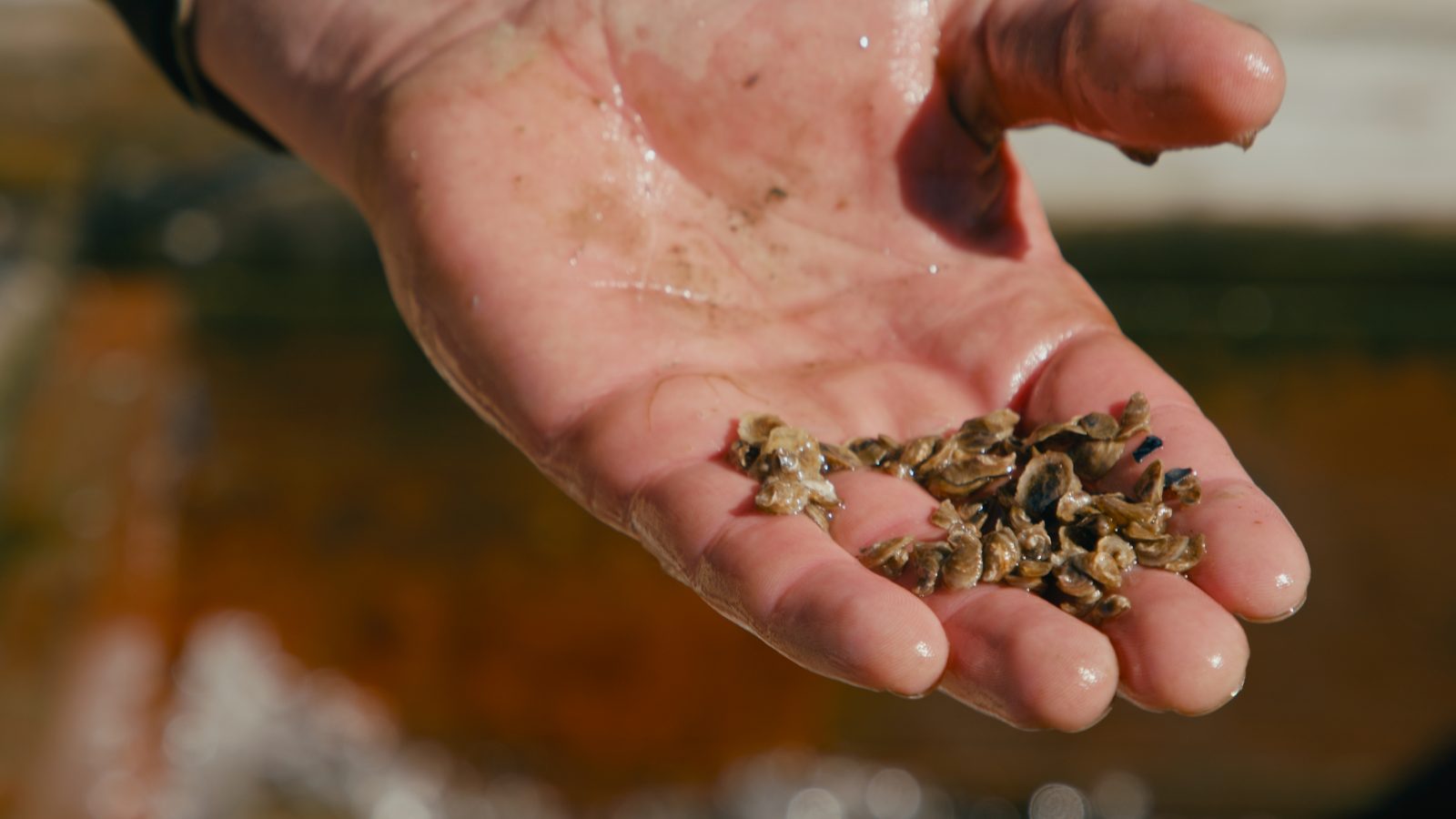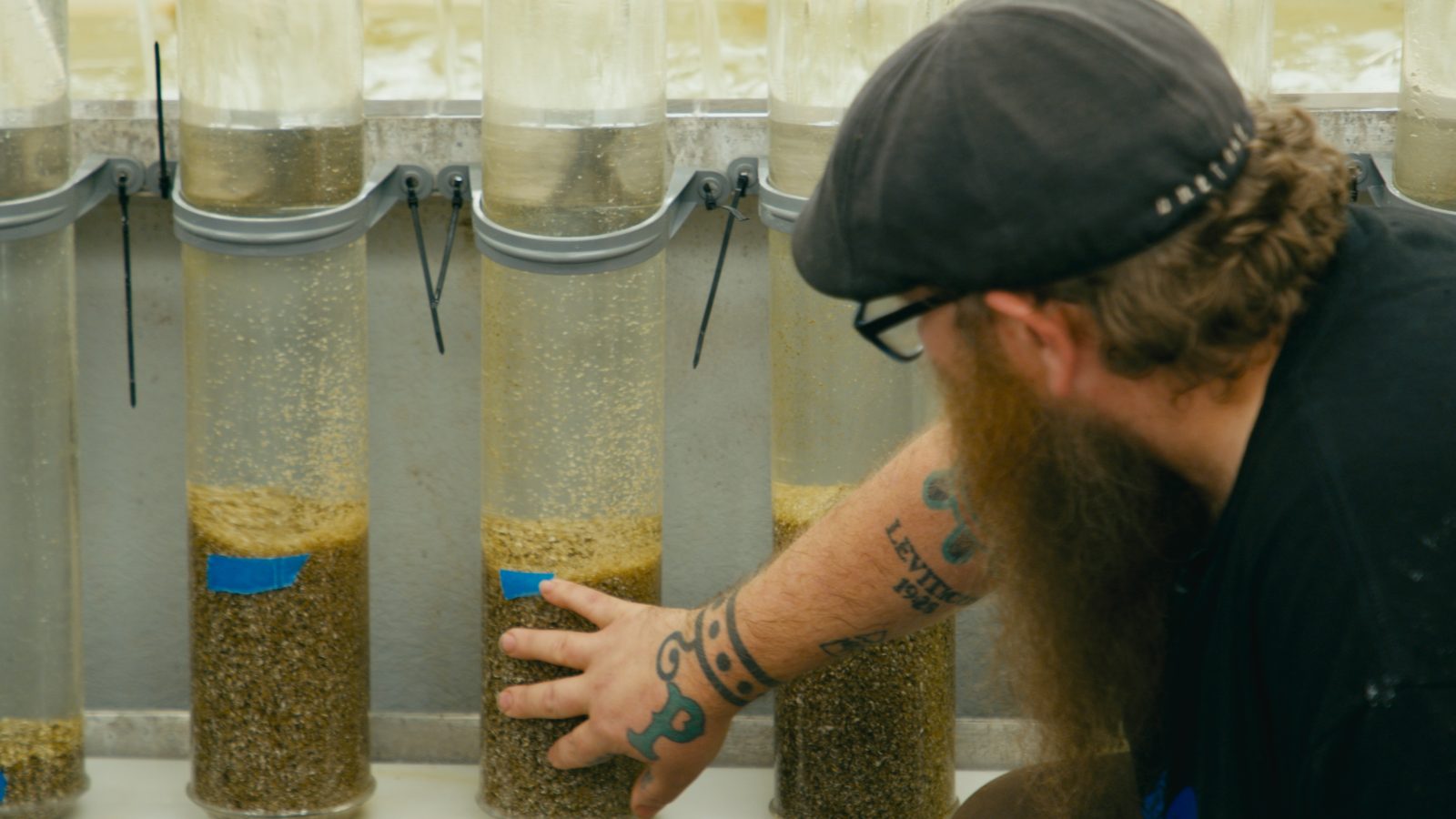Search AMC News
De-Risking Investments: Oyster Seed Size Analysis Project Overview
October 6, 2025
Lead Entities: Alaska Fisheries Development Foundation, OceansAlaska, University of Alaska Fairbanks
Grant Component: Research & Development

The Alaska Mariculture Cluster (AMC) is working on an important project titled, “Maximizing Success: Ideal Oyster Seed Transfer Size from Nursery to Farm in Alaska.” The project is led by OceansAlaska, in partnership with the University of Alaska Fairbanks (UAF), and funded through an RFP for the AMC’s De-Risking Mariculture Investments & Site Suitability Program.
OceansAlaska’s project received an award of $88,134 and is being administered through the Alaska Fisheries Development Foundation (AFDF), a sub-award recipient of AMC. The work began in December 2024 and will conclude in March 2026, with the majority of the fieldwork taking place in 2025.
Choosing the right seed size is a critical factor in oyster farming, so this project aims to determine whether oyster seed size affects oyster performance. While the industry standard has long been ½-inch seed, anecdotal evidence suggests that larger seed sizes may lead to faster growth, higher survival rates, and earlier harvests. For example, ⅝-inch or ⅞-inch seeds may have advantages in more temperate regions with shorter growing seasons, where larger seeds with faster growth rates can reach maturity more quickly. If validated, the use of larger seeds could significantly improve the biological viability and economic returns for oyster farmers across Alaska.


Another project goal is to identify correlations between environmental conditions and oyster growth rates and survivability. In pursuit of this goal, research spans multiple regions of Alaska—including Cook Inlet, Lynn Canal, Kodiak, Prince of Wales, Sitka, and Prince William Sound—where oyster seed is being deployed, monitored, and measured. The project has been evaluating three different seed sizes, testing which performs best under Alaska’s diverse site conditions.
During summer 2025, the project team deployed oyster seed at three farm sites: Sitka Sound, Naukati Bay on Prince of Wales Island, and Kachemak Bay. The trial is testing three seed transfer sizes (9 mm, 12 mm, and 16 mm) in floating basket gear to evaluate survival, growth, and cost-benefit trade-offs under farm conditions. The first growth measurements were collected in August, and the second sampling is now underway at all sites. Early observations indicate strong growth and very low mortalities to date. Data entry is ongoing, and preliminary results will be reviewed soon to guide farmers and hatcheries on the most effective strategies for nursery-to-farm transfer in Alaska.
The findings will be shared widely with Alaska shellfish growers, tribal organizations, and research partners through the Alaska Shellfish Growers Association (ASGA), peer-reviewed publications, and presentations at major conferences such as the Mariculture Conference of Alaska, Pacific Coast Shellfish Growers Association (PCSGA), and the Alaska Marine Science Symposium (AMSS). By making this information publicly available, the program ensures that benefits extend across Alaska’s mariculture industry, supporting both current and future growers.
This initiative reflects AMC’s commitment to breaking down barriers for new and existing farmers, building a sustainable and profitable mariculture industry that benefits Alaska’s economy, environment, and coastal communities.
Background
Southeast Conference (SEC) is the federally designated Economic Development District (EDD) for Southeast Alaska, as well as the state designated Alaska Regional Development Organization. SEC’s mission is to undertake and support activities that promote strong economies, sustainable communities, and a healthy environment in Southeast Alaska.
In September 2022, Southeast Conference was awarded a $49 million U.S. Economic Development Administration (EDA) Build Back Better Regional Challenge (BBBRC) grant to catalyze a viable and sustainable mariculture industry in Alaska, supporting the production of shellfish and seaweed, for the long-term benefit of the state’s economy, environment, and communities.
SEC leads the Alaska Mariculture Cluster (AMC) grant coalition, which includes members of Alaska’s mariculture industry, tribal organizations, regulatory agencies, university system, regional EDDs, trade organizations, and others. A Governance Body, composed of AMC coalition leaders and Tribal executives from each of the project regions, guides the grant’s work and equity metrics.
The AMC has complementary grant components designed to break down barriers and develop Alaska’s mariculture industry. The Overarching Narrative explains how the grant components work together to grow the industry in an equitable and responsible manner. The full project period for the AMC BBBRC project is October 1, 2022 to September 30th, 2026.

